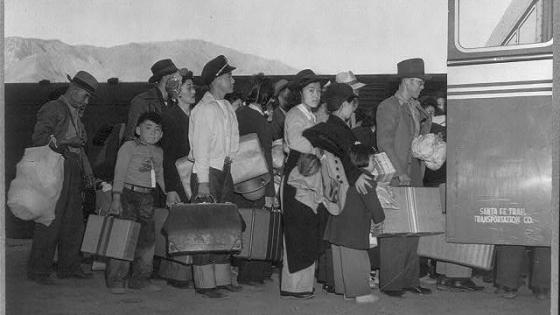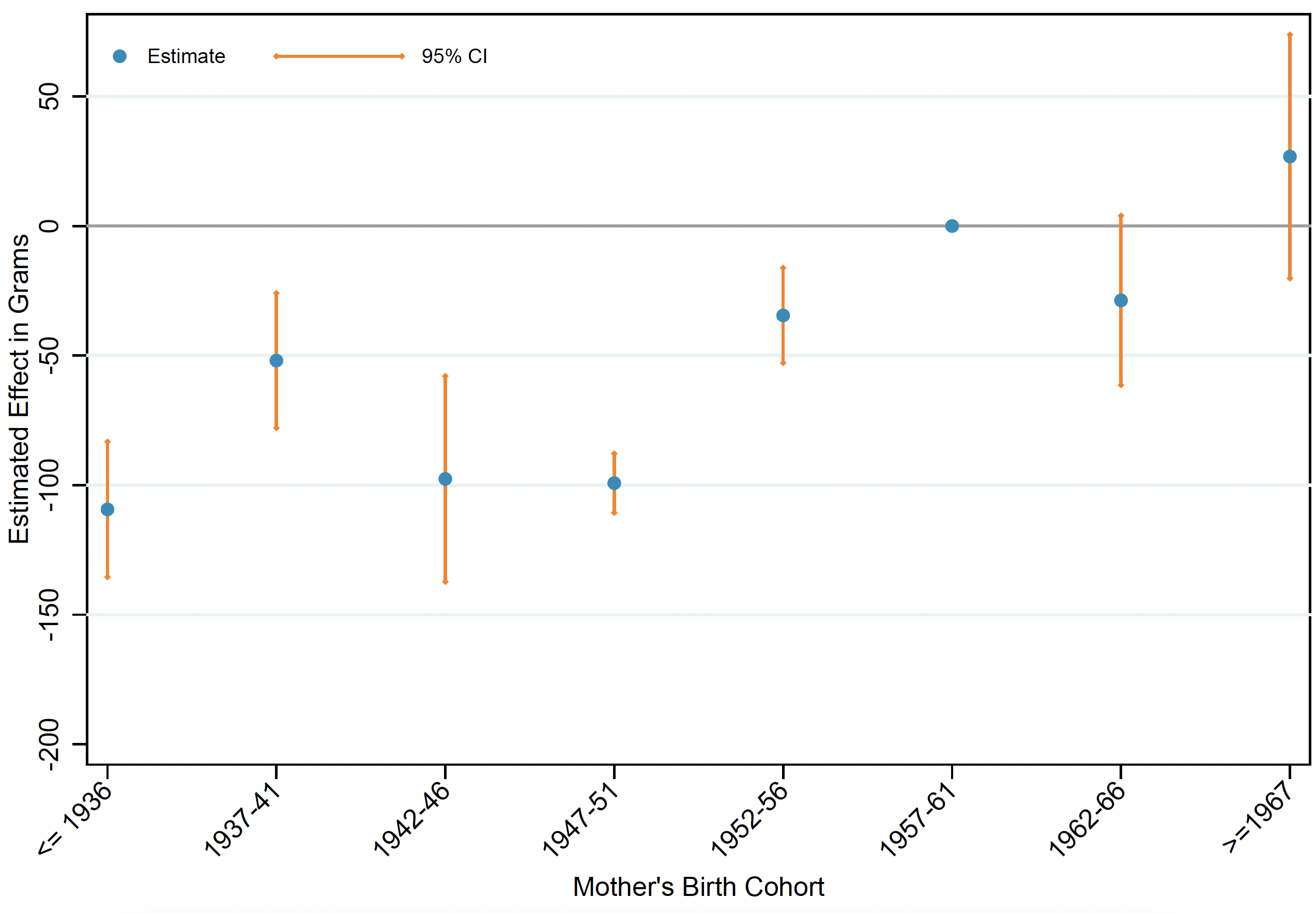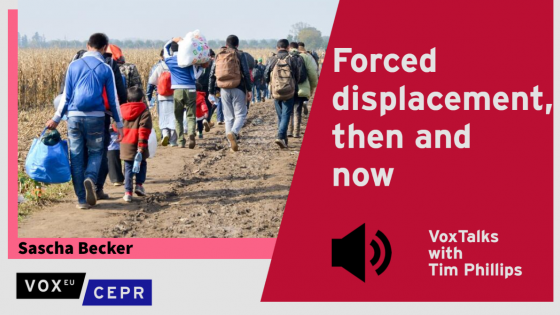In 2022, the population of forcibly displaced people by violence, conflict, persecution, or human rights violation stood at 108.4 million (UNHCR 2022). While there has been a surge in forced displacement in the last decade, driven by the Syrian refugee crises, the war in Ukraine (Verwimp 2022) and violence in Afghanistan, this is not a recent phenomenon. Episodes of forced displacement have occurred throughout history; some well-known examples are the expulsion of Palestinians in 1948, the Armenian genocide in the early 20th century (Arbatli and Gomek 2018), and Jewish expulsion and pogroms in Europe throughout the Middle Ages (Johnson et al. 2013).
The forcible removal of populations has both immediate and long-run consequences for the affected populations. The economics literature on the legacy of displacement and forced migration has recently grown (Becker 2022), documenting predominantly labour market changes (Nakamura et al. 2021), human capital accumulation (Becker et al. 2020), or political consequences (Braun and Dwenger 2020). The health consequences of such events, however, are still relatively understudied, despite having deep and long-term effects that likely carry on across generations (Almond et al. 2010).
Our recent research (Grossman et al 2023) studies the forced displacement of Japanese Americans during WWII. This episode represents one of the largest state-led removals of civilians in US history: more than 110,000 Japanese Americans were forcibly evacuated from their homes and imprisoned in camps located in remote areas of the US, managed by the US War Relocation Authority. This policy, combined with the prohibition on emigrating, resulted in an average incarceration length of three and a half years.
We evaluate the effects of such policy on the birth outcomes, human capital accumulation, and marital matching patterns of Japanese women decades after exposure to incarceration.
Incarceration and living conditions in the camps
The process of incarceration was formalised with the passing of Executive Order No. 9066 by President Franklin Roosevelt, which was motivated by national security concerns against the potential threat of Japanese sabotage and espionage. As a result, nearly all Japanese Americans residing on the US mainland were incarcerated. On the other hand, just 1% of the Japanese population of Hawaii, which composed more than one-third of the total population of the island, were incarcerated. Given its size, incarcerating this group was impractical and would have severely disrupted the Hawaiian economy and hence was not implemented.
Evacuation of the population of Japanese ancestry started with transportation to temporary assembly centres from March to August 1942. It was followed by incarceration in permanent camps. Overall, poor living conditions were the causes of many of the illnesses that afflicted the internees’ overall health, including women’s reproductive health. Many assembly centres were converted race tracks and fairgrounds, meaning the evacuees had to live in horse stalls and animal quarters (Nagata 2013); in the camps, housing was barrack-style, overcrowded, and without running water. Sanitation was poor, leading to widespread outbreaks of intestinal flu and regular epidemics of dysentery, typhoid and tuberculosis across several camps; episodes of diarrhoea were very common. Further medical issues included: infantile paralysis associated with polio, ptomaine poisoning, desert silicosis, respiratory problems, malaria and sleeping sickness.
On 17 December 1944, Public Proclamation 21 allowed all persons of Japanese ancestry, cleared by military authorities, to leave the camps. Initially, internees could not return to their West Coast homes, so they moved to new locations in the Midwest and to the East. They were told not to congregate as a group in public and to avoid having Japanese neighbours. Pre-WWII, 90% of individuals of Japanese ancestry living in the continental US lived in California, Oregon, and Washington (Ruggles et al. 2021). Immediately post-detention, fewer than 50% lived in these three states (United States War Relocation Authority, 1946).
Health consequence of internment
Japanese American imprisonment was largely an unanticipated event, given that before the attack on Pearl Harbor there was no expectation that Japanese Americans would be incarcerated en masse. Furthermore, incarceration targeted only people of Japanese ancestry residing in mainland US but not those living in Hawaii. This resulted in the de facto complete displacement of the former, but not of the latter, thus providing an ideal comparison group, given common heritage.
We use Japanese American mothers on the West Coast born in or before 1946 as the treated group and compare their outcomes to those living in Hawaii, i.e. women who did not undergo forced displacement. We find that Japanese mothers who were incarcerated in camps during their childhood gave birth to babies who were 77 grammes lighter compared to Japanese mothers living in Hawaii. Using other Asian mothers on the West Coast as an alternative comparison group, the effect size drops to 59 grammes, potentially due to general anti-Asian discrimination on the mainland in the decades around WWII. These are sizable effects, varying from approximately 1.8% to 2.4% of the average birthweight of the control group in the non-treatment period. We further find that exposure to a camp is associated with a greater number of low birthweight (LBW) babies. Compared to Hawaiian-born Japanese Americans, the effect implies one additional LBW baby per 100 births for women exposed to the camps.
While incarceration per se represented a big negative shock, the initial post-incarceration years were likely associated with trauma. Indeed, it has been documented that the transition process post-incarceration was particularly harsh: families were on the move with few possessions, and no steady source of income or residence because their property and place of residence pre-treatment had been seized (Kashima 1980). We test this hypothesis by focusing on ‘partially treated’ mothers, i.e. Japanese American mothers born within ten years post-imprisonment. Our results point to slightly diminished, though still substantial negative effects.
We present our results graphically in Figure 1, where we plot birthweight on the vertical axis and birth cohorts on the horizontal axis. The estimates suggest that, compared to Japanese Americans born in Hawaii, those who were incarcerated had consistently lower birthweight, with effect sizes varying from 50 to 100 grammes throughout the incarceration cohorts. This effect continued at 100 grammes for the 1947-1951 cohorts and reduced to approximately 35 grammes for the 1952-1956 cohorts, demonstrating negative effects of incarceration combined with continuing difficulties post-release.
Figure 1
Mechanisms and other outcomes
The primary theoretical mechanism behind the above findings is likely nutritional deprivation
and other physiological and psychological health deficiencies that mothers would have suffered while they themselves were in utero or in early childhood while incarcerated. Interestingly, they were not driven by worse maternal healthcare. Indeed, we find that the effects on prenatal health behaviours do not match these decreases in the health of babies born to treated mothers: mothers exposed to camps were more likely to receive any prenatal care and more likely to start prenatal care within the first two trimesters of pregnancy. These positive effects, which may be due to an increase in human capital accumulation associated with populations exposed to forced migration (Becker et al. 2020), may partially mitigate the negative intergenerational health effects of incarceration.
Incarceration mattered beyond just health outcomes. It also affected interpersonal relationships and household stability of the treated population later in life. We show that incarcerated Japanese Americans were substantially less likely to have a white or a non-Japanese partner. An important potential mechanism behind this finding is long-term distrust among Japanese Americans towards those who incarcerated them. This decreased likelihood of intermarriage may have been further amplified by internees’ refusal to discuss their experiences, even with family members (Nagata et al. 2015).
Conclusion
In our study, we find that Japanese American women who were incarcerated during their childhood and/or were born in camps had babies who were in worse health than comparison groups. Negative health effects for those born in the ten years post-incarceration are still substantial, though somewhat diminished. Despite this negative health effect on later generations, we find positive effects on health behaviours during pregnancy. However, we show that these gains are not nearly large enough to mitigate the negative intergenerational health effects of the forced displacement of Japanese Americans during WWII.
This study demonstrates that trauma suffered during childhood has long-lasting impacts not just for the individuals directly impacted, but also for their children. Such findings are in line with existing studies documenting the importance of accounting for intergenerational effects in social safety net programs (Hoynes et al. 2016, East et al. 2023). Further, our study provides support for the limited success of mitigating harm from discriminatory and/or nutritional shocks, and suggests additional interventions must be undertaken to counter the structural, intergenerational negative effects of trauma.
References
Almond, D, L Edlund, H Li and J Zhang (2010), “Long-term effects of early-life development: Evidence from the 1959 to 1961 China famine”, in The economic consequences of demographic change in East Asia, University of Chicago Press.
Arbatli, C E and G Gokmen (2018), "Ethnic capital and sub-national development: Armenian and Greek legacy in post-expulsion Turkey", SSRN 3273964.
Braun, S T and N Dwenger (2020), "Settlement location shapes the integration of forced migrants: Evidence from post-war Germany", Explorations in Economic History 77: 101330.
Becker, S (2022), “Forced displacement, then and now”, VoxEU.org, 8 April.
Becker, S O, I Grosfeld, P Grosjean, N Voigtländer and E Zhuravskaya (2020), “Forced migration and human capital: Evidence from post-WWII population transfers”, American Economic Review 110(5): 1430–1463.
East, C N, S Miller, M Page and L R Wherry (2023), “Multigenerational impacts of childhood access to the safety net: Early life exposure to medicaid and the next generation’s health”, American Economic Review 113(1):98–135.
Grossman, D S, U Khalil, and L Panza (2023), “The Intergenerational Health Effects of Forced Displacement: Japanese American Incarceration during WWII”, CEPR Discussion Paper 18714.
Hoynes, H, D W Schanzenbach and D and Almond (2016), “Long-run impacts of childhood access to the safety net”, American Economic Review 106(4): 903–34.
Johnson, N, M Koyama and W Anderson (2013), “From the persecuting to the protective state? Jewish expulsions and weather shocks from 1100 to 1800”, VoxEU.org, 18 February.
Kashima, T (1980), “Japanese American Internees Return, 1945 to 1955: Readjustment and Social Amnesia”, Phylon (1960-) 41(2): 107–115.
Nagata, D K (2013), Legacy of injustice: Exploring the cross-generational impact of the Japanese American internment, Springer Science & Business Media.
Nagata, D K, J H J Kim and T U Nguyen (2015), “Processing Cultural Trauma: Intergenerational Effects of the Japanese American Incarceration”, Journal of Social Issues 71(2): 356–370.
Nakamura, E, J Sigurdsson, and J Steinsson (2022), "The gift of moving: Intergenerational consequences of a mobility shock", The Review of Economic Studies 89(3): 1557-1592.
Ruggles, S, C A Fitch, R Goeken, J D Hacker, M A Nelson, E Roberts, M Schouweiler, and M Sobek (2021), “IPUMS Ancestry Full Count Data: Version 3.0 1940 Census”, IPUMS.
UNHCR (2022), Global trends. Forced displacement in 2022.
United States. War Relocation Authority (1946) ,“The Relocation Program”, United States Government Printing Office.
Verwimp, P (2022), “Forced displacement, gender identity norms, and marital stability in the wake of the war in Ukraine”, VoxEU.org, 5 July.







